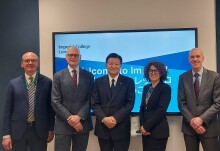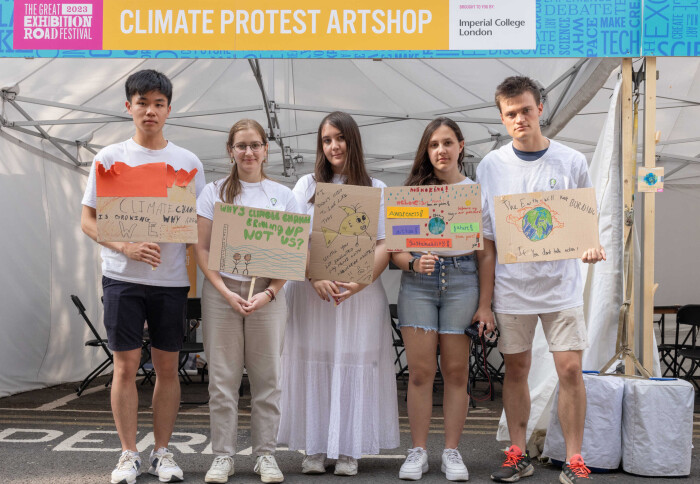
Young people holding placards they designed to protest the climate emergency, photographed by Thomas Angus

How can complex scientific research be communicated in a way that’s engaging and accessible?
The impact of climate change on our planet and how medical research can improve health outcomes are just two science topics that a range of people are interested in. Drawing on other disciplines is a great way for scientists to reach diverse audiences, as seen with the intersection between science and art. Both art and science inspire a sense of awe and wonder, so let’s look back on some innovative ways Imperial has brought the two together in 2023.
Dance your PhD finalist
Have you ever imagined presenting your PhD via dance? Since 2008, the annual Dance your PhD competition has encouraged the use of dance to explain scientific theories - by asking PhD students to submit a video of them dancing their PhD. This year, Imperial student Eleonora Moratto was shortlisted as a finalist for the competition.
Moratto is a trained ballet dancer, and is also completing her PhD at Imperial on the bioelectricity of plant pathogen interactions. Moratto’s interest in how both ballet and science are used in storytelling combine in her dance, where she uses lighting as a visual representation of the electric field and different dance styles for spores and plants. The competition aims to inspire innovative ways of communicating science, and show that science and dance have more in common than you might think. You can check out her stunning dance on YouTube.
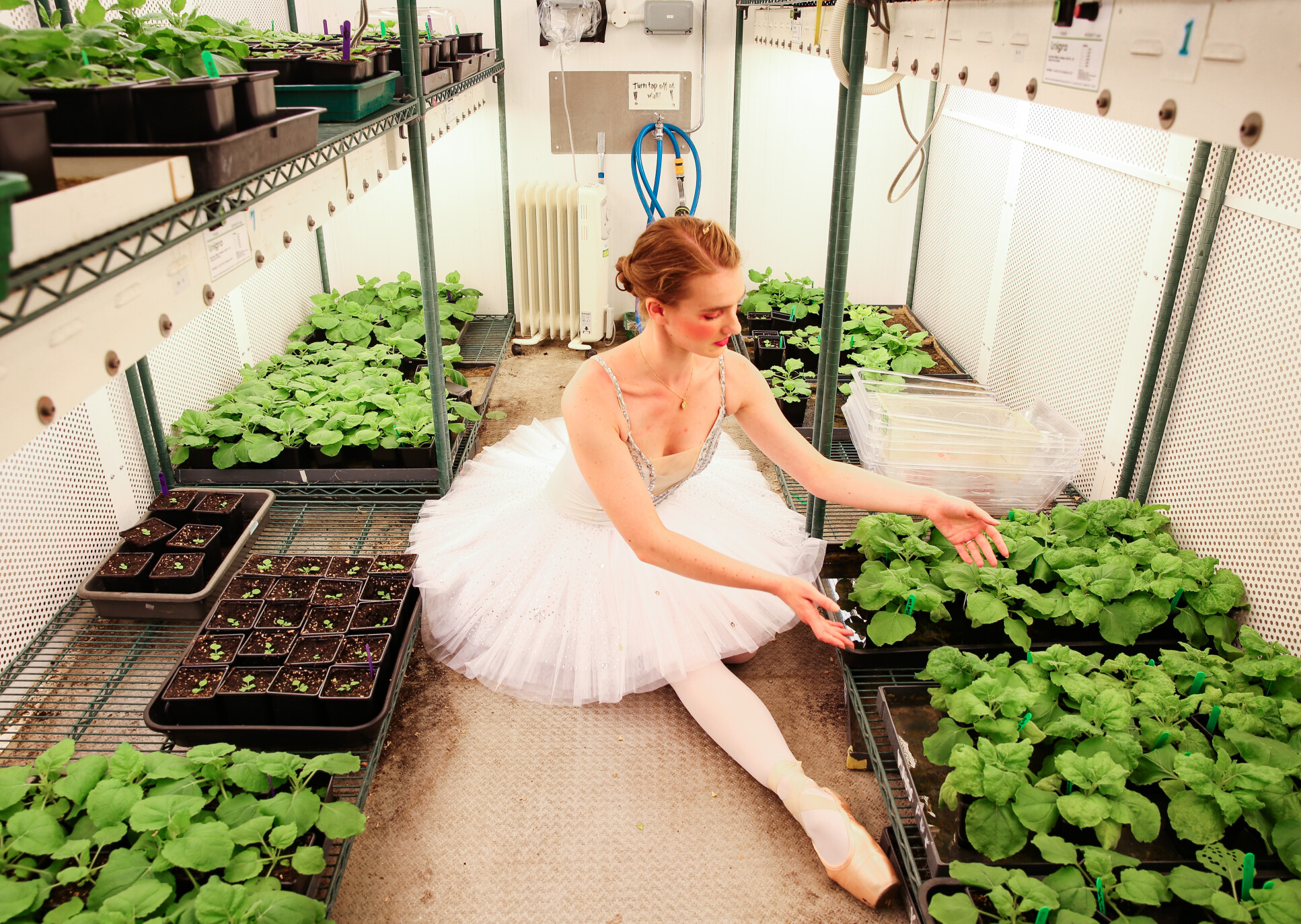
Moons through music
A partnership between composer Amanda Lee Falkenberg, Imperial scientists and the UK’s first astronaut, Helen Sharman OBE, brings a new perspective to space science. The Moons Symphony is a seven-movement piece (one for each of the planets) which uses orchestral music to explore the moons of the solar system.
The Moons Symphony was designed as part of a wider educational programme, to engage young people from backgrounds underrepresented in both classical music and science. Research conducted over the last two years reveals that students from low-income and other marginalised backgrounds are less likely to train in classical music or perform well in science GCSEs, so this project is a great way to show that science and classical music can be enjoyed and performed by everyone.
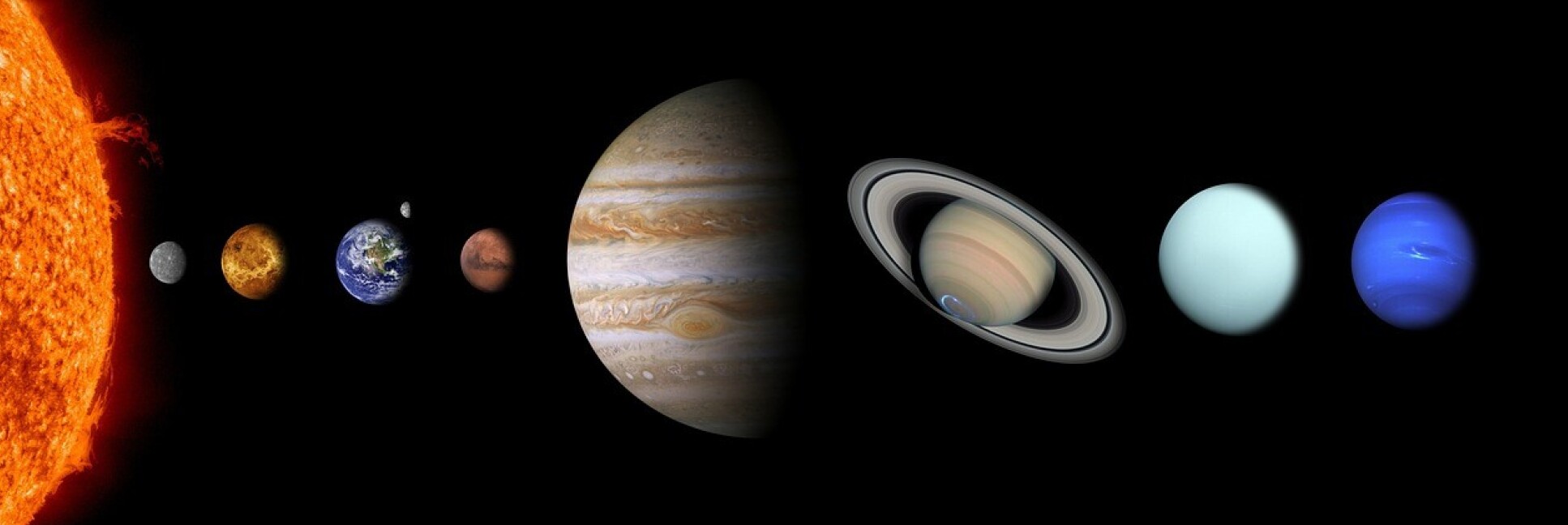
The Future Fridge
The Future Fridge aims to encourage conversations about how the food we eat could evolve over the next few years. The Future Fridge is the exciting result of a collaboration between design agency The Liminal Space, Imperial researchers and the community centre Nourish Hub.
It’s an interactive fridge with doors and drawers that can be opened to reveal familiar and not so familiar types of food- think plant based milks and chicken nuggets made from insect protein. Through engagement with the fridge at events such as the Great Exhibition Road Festival and Imperial Late’s Future of Food, researchers have been able to understand people’s food habits as well as attitudes towards new trends in food production.
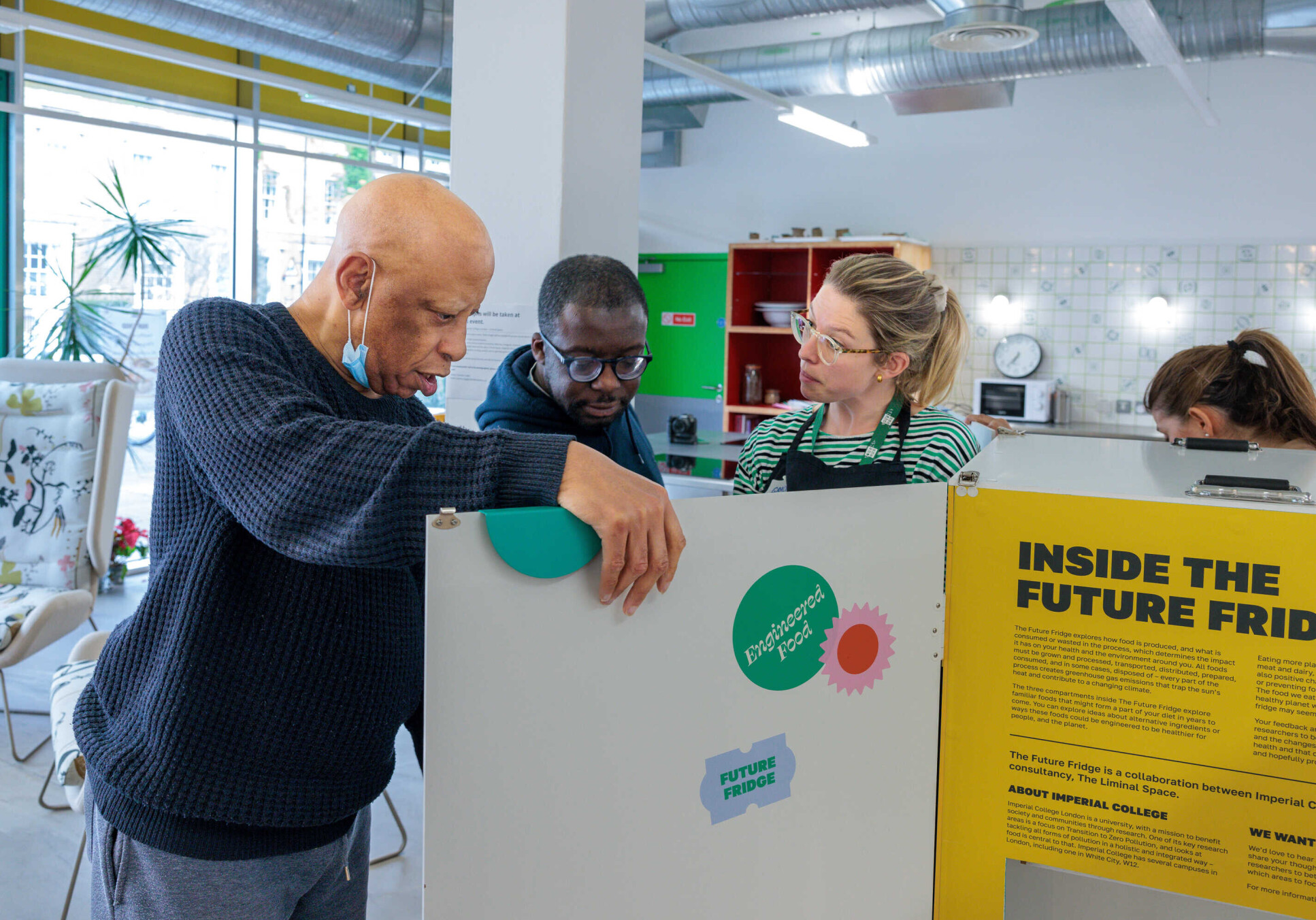
Great Exhibition Road Festival 2023
A discussion about science and art at Imperial would be incomplete without a mention of the Great Exhibition Road Festival. The annual festival celebrates science and art and recorded its highest ever visitor numbers this year (over 50,000). Together with the other organisations that are based around Exhibition Road (from the Royal Geographical Society to the Goethe-Institut), Imperial hosted a number of talks, workshops and activities aimed at getting people of all ages and backgrounds interested in science.
While it would take up many pages listing all the events that took place, some of the most thought-provoking blends of science and art included: artists creating murals inspired by Imperial research, a photo and video exhibit showcasing the beauty and fragility of earth and young people creating their own placards to protest the climate emergency, as can be seen in this article's cover image.
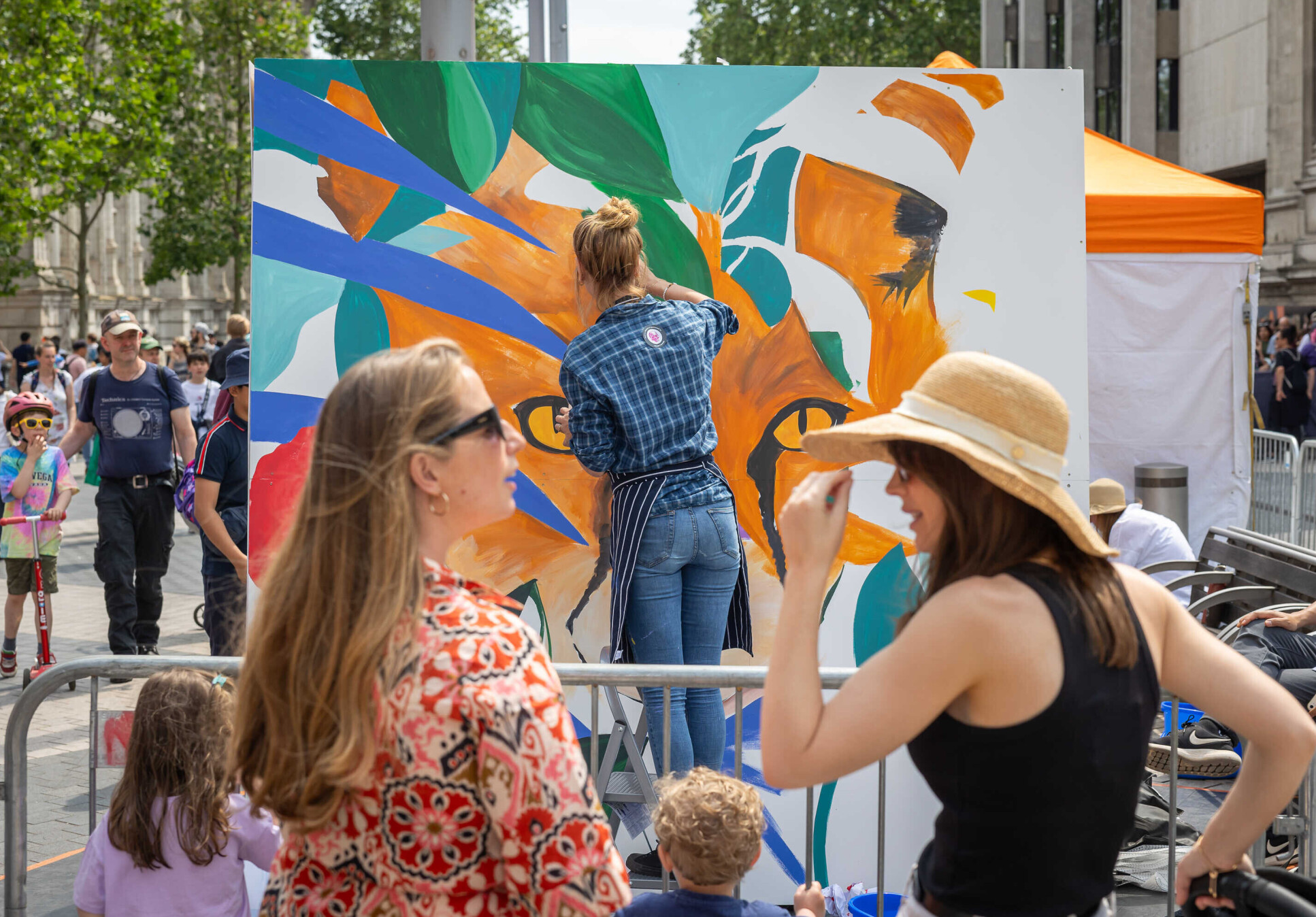
Grantham Climate Art prize
Organised by the Grantham Institute and sponsored by Octopus Energy, the Climate Art Prize is a creative way to get young people actively engaged in tackling climate change. The 2023 competition was open to young people aged 11-25, asking them to create an art piece referencing one of the Institute’s ‘9 Things You Can Do About Climate Change’.
The three winning artists - and one runner up - now have an outdoor public mural that showcases their design, painted by professional artists. The artworks can be found in London, Coventry and Glasgow, as well as digitally across London transport hubs. It’s hoped that the designs will spark conversations about how to tackle climate change, and the role art can play in this.
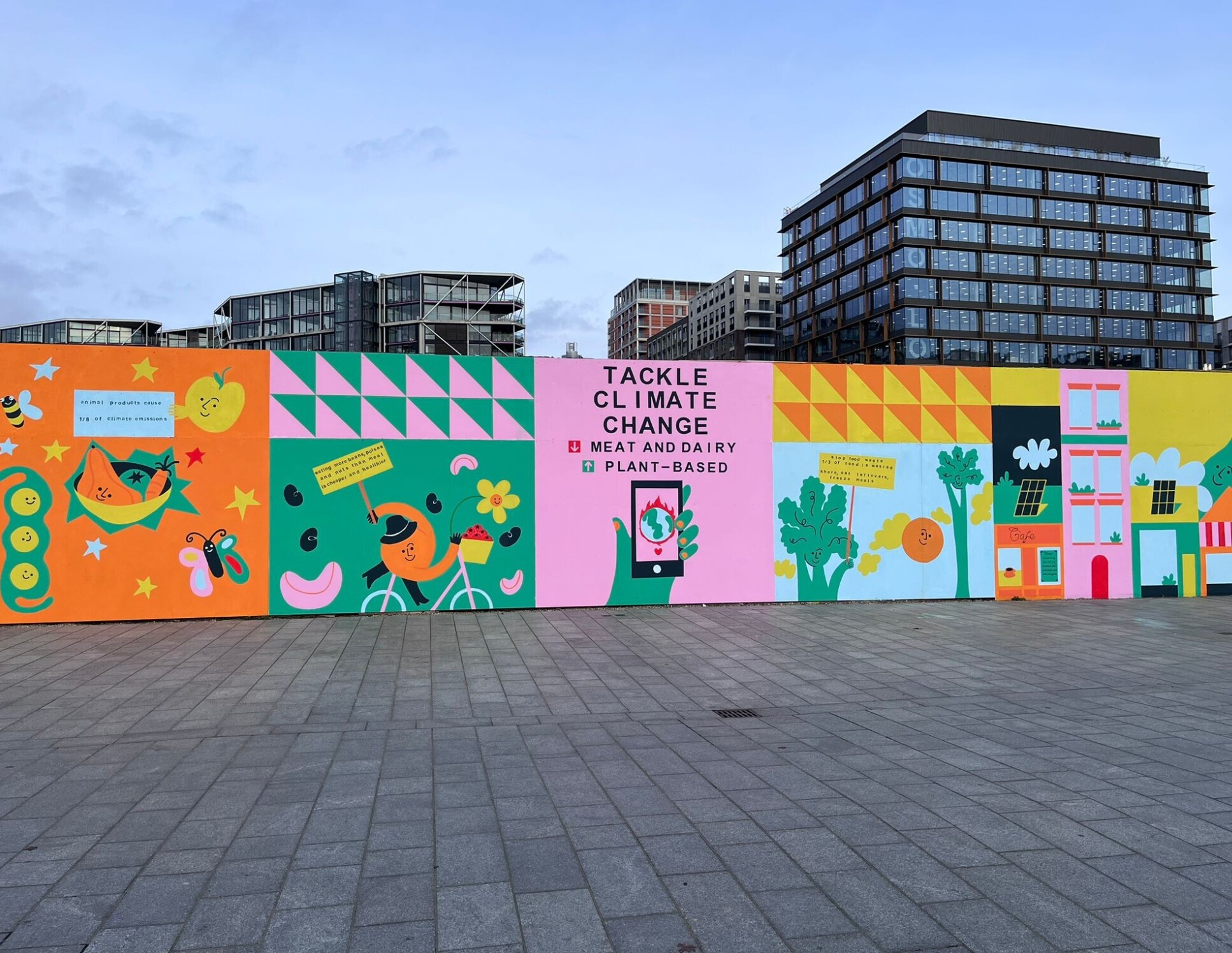
Article text (excluding photos or graphics) © Imperial College London.
Photos and graphics subject to third party copyright used with permission or © Imperial College London.
Reporter
Helena Kudiabor
Centre for Languages, Culture and Communication

